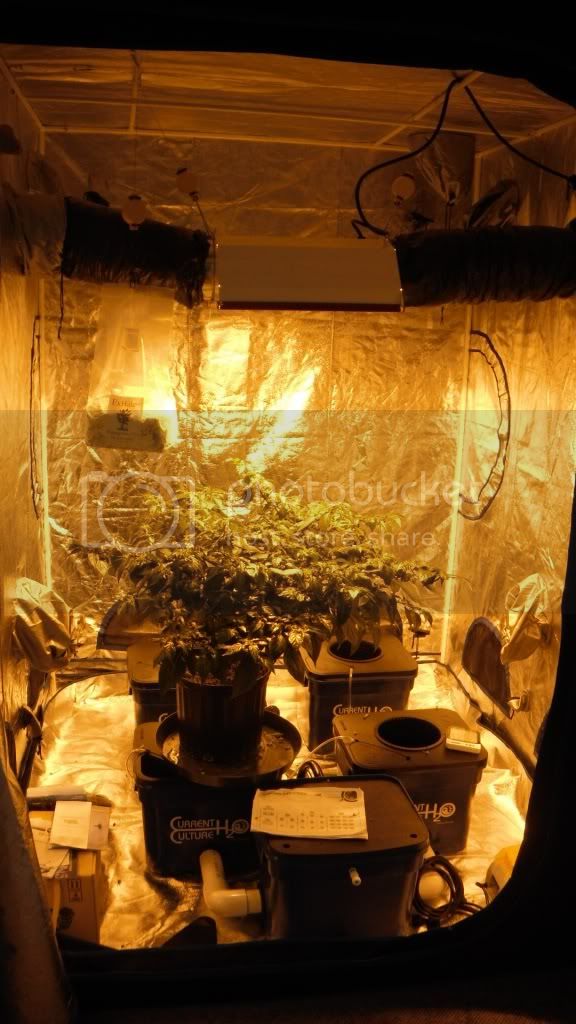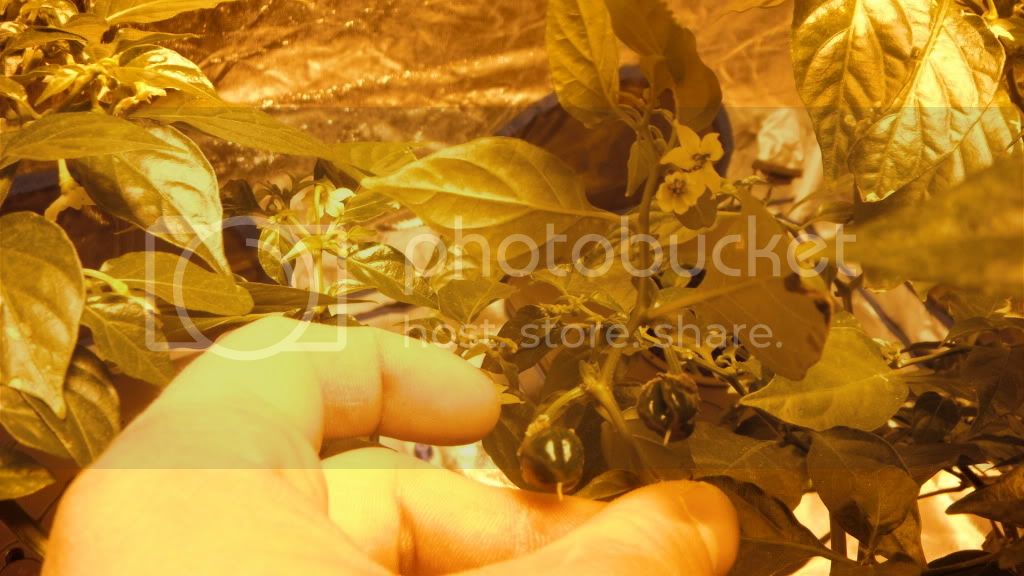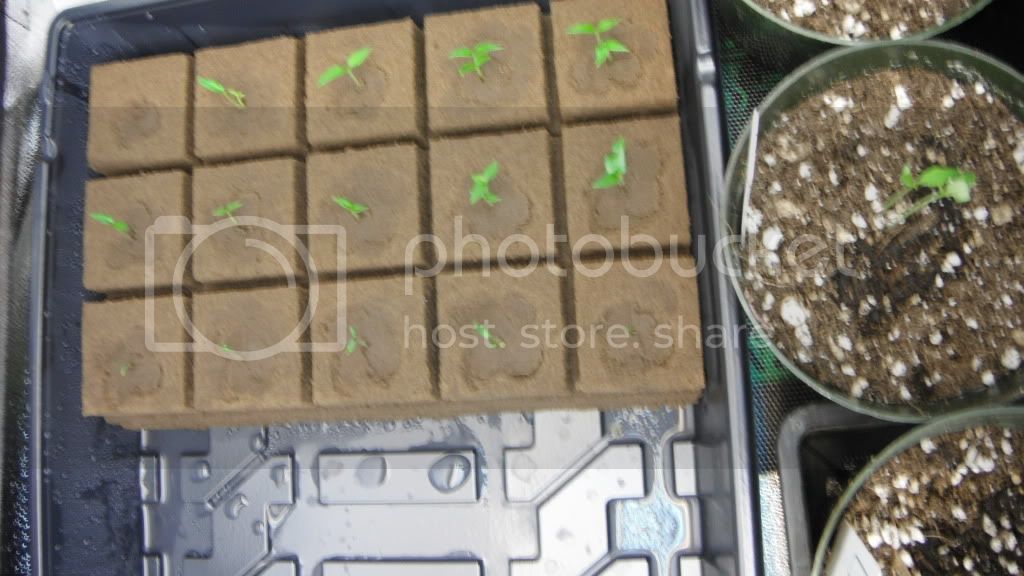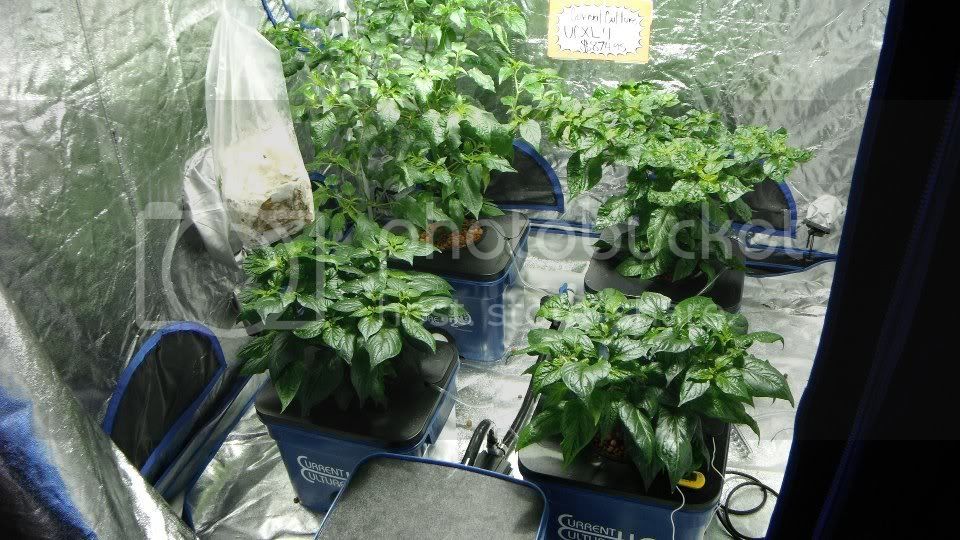I copied this from another site. Noticed your using an exhale bag.
Another great way to maximize your yield is to increase the amount of C02 in your growing environment. You probably already know that plants need it for photosynthesis, but you may not know that all plants today are really under productive compared to their ancestors. When vegetation was first starting to grow on the earth, the CO2 concentration in the atmosphere was exponentially higher than it is today. The good news is, most plants (especially cannabis) have not lost their ability to process massive amounts of C02, and when introduced to the growing environment, they can grow much faster, denser, and produce a much higher yield.
How to Introduce CO2 to Your Growing environment:
As you can imagine, you can spend a shit load of money and get really sophisticated equipment that will work wonders. However, as with many things in the
*** growing community, there are ways to do it inexpensively.
(if you are interested in the "Highly sophisticated" version click here)
If cash is something you can't spend, but you have just a little time and about $2, You can make a basic CO2 generator (aka fermenter) that works great for small to medium size grow spaces.
Materials Needed:
Empty Milk Jug or a somewhat large vessel with a lid.
Water
Sugar
Yeast
Safety pin or something you can poke holes with.
Method:
Fill the milk jug 1/2 - 3/4 full of water, and add 1-3 cups of sugar. Let the water stand until it is room temperature (or just use luke warm water). This is important because yeast is a living organism, and if you put it in water that is too cold or hot, you will shock it and kill most, if not all, of it. Add about 2-3 tablespoons of yeast. Place the lid on top and use a safety pin or something to poke a handful of small holes through the lid. Place the jug in your grow room in the exact opposite position of your vent fan (if you have one). For example, if your vent is in the upper left-hand corner in the back of your grow area, place the jug in the bottom right-hand corner in the front. If your grow area is larger, place multiple fermenters around your grow space.
What to expect:
Within an hour of adding your yeast, you should see it start to activate. A foam will start to develop on the top and grow larger. Some yeast strains are much more aggressive than others, and it's very possible that it will "boil over" or ooze out of the top. If it does, clean up the mess and remember to add less yeast next time. After a week or so, the yeast should start to calm down and the foam will decrease in size. After three weeks, most of the yeast will be sediment at the bottom of the fermenter. This yeast is NOT dead, and it can be rechagarged. You want to recharge the dormant yeast because it is no longer producing C02. To do so you can either give the jug a shake to give a it a quick recharge, or you can add more sugar to make the effect last longer.
Why This Works:
The yeast consumes the sugar and expels (shits) alcohol and CO2. This is the exact same process used to make the alcohol that people drink, although CO2 is usually seen as a byproduct. In this application however, the alcohol is the byproduct. By placing the fermenters in the opposite location of your vent fan, you are allowing the CO2 to be spread more evenly over your entire grow space.
If you don’t know the basics of photosynthesis, basically, the plant takes CO2, water, and sunlight and converts it into glucose and oxygen (here oxygen is a byproduct of photosynthesis).
Here is the formula:
Six molecules of water + Six molecules of Carbon Dioxide + Sunlight = 1 molecule of Sugar and six molecules of oxygen
6H2O + 6CO2 ----------> C6H12O6+ 6O2
The plant needs sugar (or glucose) to grow anything, so the more glucose it makes, the faster and bigger it will grow (think of a kid who only drinks soda and eats McDonalds).
You want to use the lid with the holes in it because it will become slightly pressurized and therefore, will slowly release the Co2 and cause it to spray out and upwards. This is opposed to not using a lid and having the CO2 slowly ooze out of the top and immediately fall to the floor of your grow area.
Alternatively, if you are into brewing your own beer/wine at home, you can run a blow off tube from your fermenters into your grow space.
Quantities of yeast, sugar, & water aren't really important because the yeast will go dormant once all of the sugar has been consumed. So, don't get too rapped up in the "right ammount" of stuff to use.








